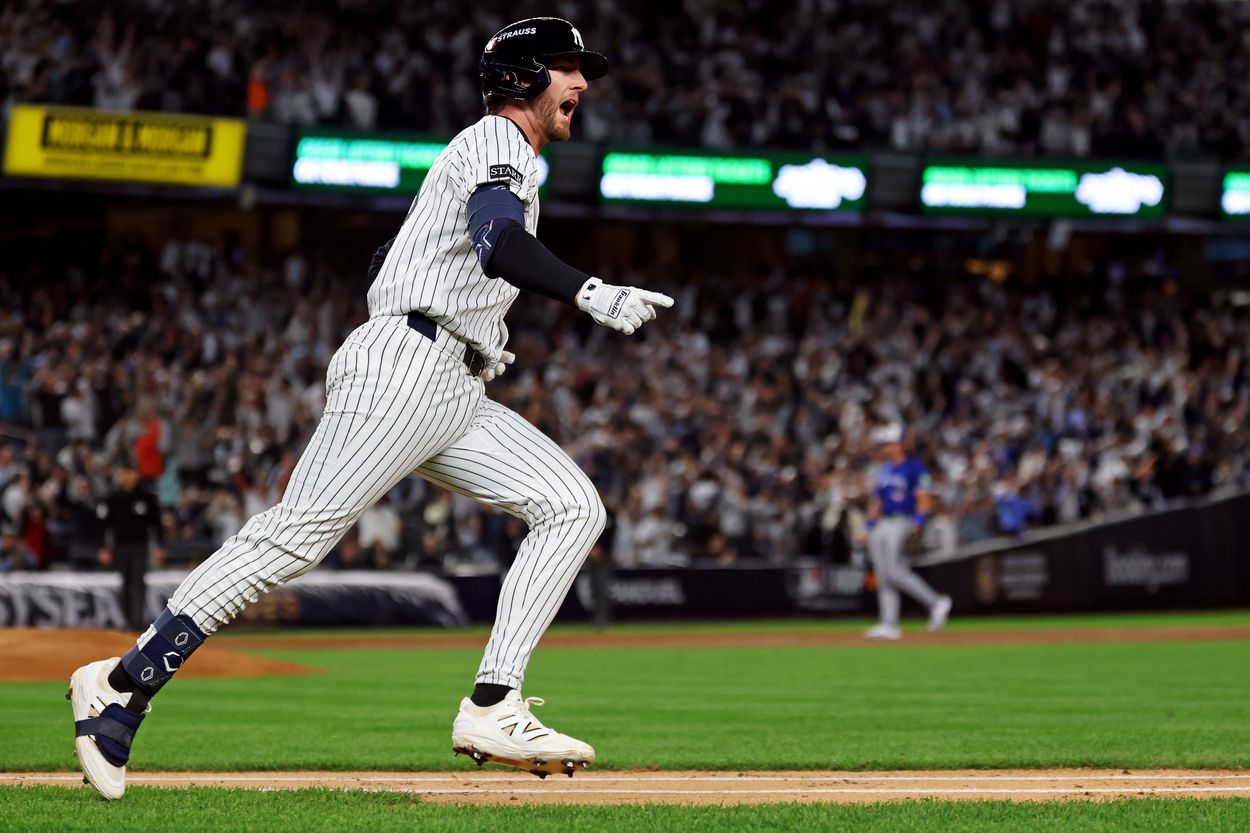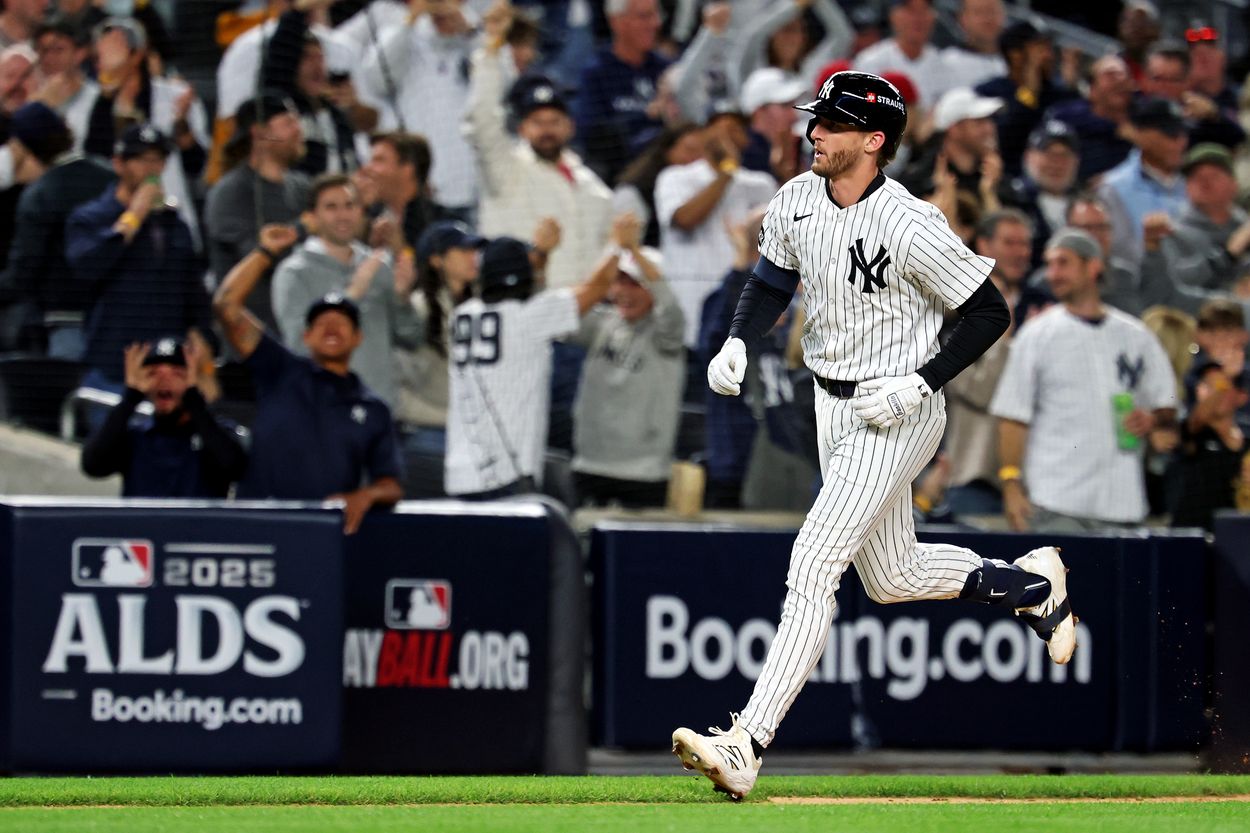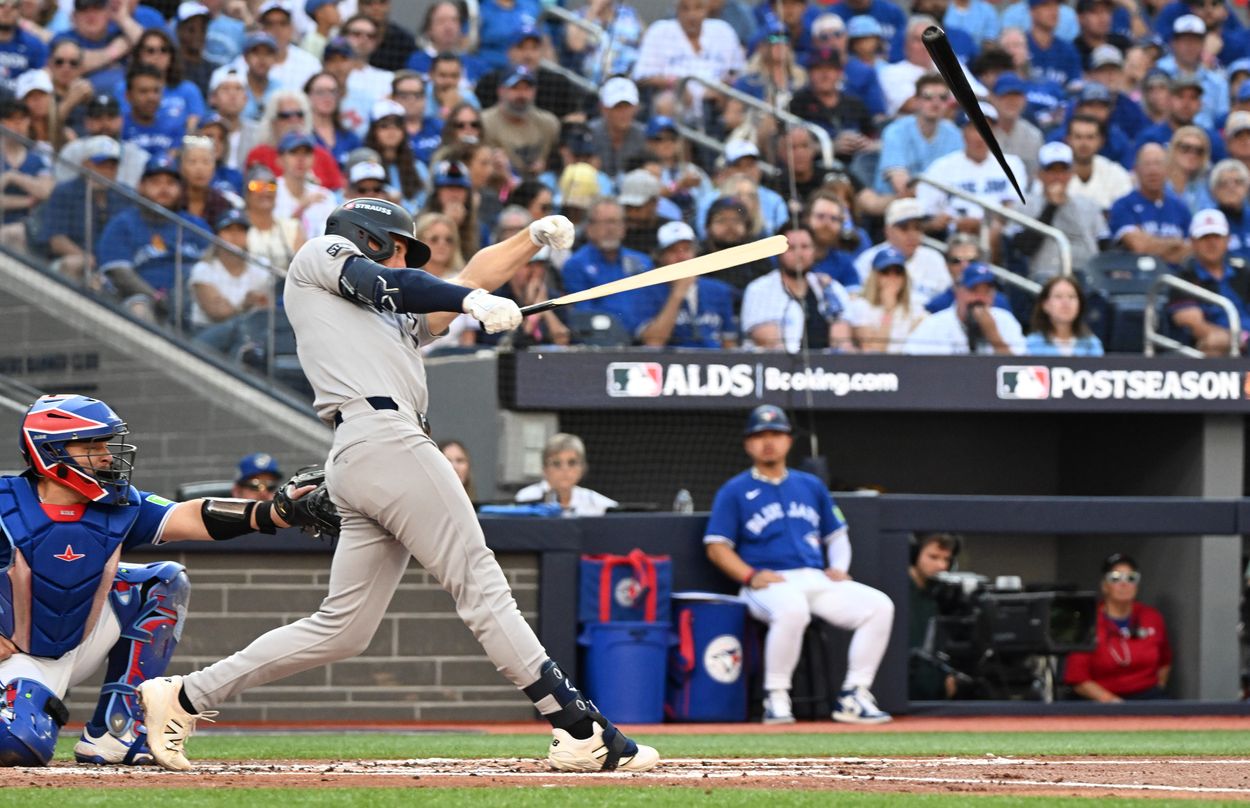
When the New York Yankees acquired Ryan McMahon from the Colorado Rockies on July 26, it wasn’t the kind of move that makes headlines or sells jerseys. But it was exactly the kind of move a team desperate for stability needed. After months of shuffling through a carousel of underwhelming options at third base, the Yankees finally found a player who could do something few others on the roster could—make the routine plays look easy and the hard ones look possible.
In exchange for pitching prospects Griffin Herring and Josh Grosz, the Yankees landed McMahon, a steady glove and a veteran presence at the hot corner. He wasn’t a superstar, and no one expected him to be. But after watching balls skip past infielders and throws sail wide for much of the season, simply having someone reliable felt like a breath of fresh air in the Bronx.
A Glove That Calms the Storm
McMahon’s bat won’t light up a scoreboard, but his glove has the kind of calming effect that ripples through an entire pitching staff. For years, the 30-year-old has ranked among the game’s best defensive third basemen—quick reactions, flawless hands, and arm strength that makes the cross-diamond throw look routine.

Even as his offensive numbers stayed modest—an 84 wRC+ and four home runs in 54 regular-season games with New York—his defense brought structure to a chaotic infield. In a season when the Yankees’ pitching staff carried heavy burdens, McMahon’s presence saved runs, prevented errors, and gave pitchers the confidence to challenge hitters more aggressively. Sometimes, steadiness can be as valuable as power.
Consistency Over Flash
Since breaking into the majors, McMahon has been the definition of reliable. He’s hit at least 20 home runs in five straight seasons but typically hovers below the league average at the plate. His 89 career wRC+ doesn’t scream star power, but it reflects a hitter who knows who he is. The Yankees knew exactly what they were getting: dependable defense, moderate pop, and zero drama.
Still, there’s a lingering question—one the Yankees front office and coaching staff are already asking behind closed doors: can they make Ryan McMahon more than just a stabilizer? Can they turn him into a genuine threat in the heart of their order?
Unlocking McMahon’s Left-Handed Power
The Yankees’ hitting development group has a track record of helping players take the next step once they’ve had a full offseason in the system. They’ll get that chance with McMahon.

The left-handed hitter’s underlying metrics suggest untapped potential: a 77th percentile bat speed (74 mph average), a 95th percentile average exit velocity (93.3 mph), and a 50.5 percent hard-hit rate that ranks in the 89th percentile. Those are the building blocks of a much better hitter than his 86 wRC+ in 2025 indicates.
If the Yankees can refine his swing path—encouraging him to pull more fly balls toward Yankee Stadium’s inviting right-field porch—they might unlock 25-home-run power. Yes, he’ll strike out, but that’s a trade-off they can live with if the contact he does make leads to consistent damage.
McMahon doesn’t need to be Nolan Arenado. If he becomes a league-average hitter with 25 home runs and elite defense, he transforms from a steady hand into a difference-maker.
The Subtle Art of Impact
In many ways, Ryan McMahon’s value mirrors a veteran shortstop’s quiet leadership—felt more than seen. He won’t have Aaron Judge’s highlight reels or Jazz Chisholm Jr.’s flair, but he represents something equally vital: balance.
Sometimes a championship roster isn’t built on splashy acquisitions; it’s held together by players like McMahon, who show up every day, make the plays that need making, and give their stars room to shine. Like a steady drumbeat beneath a soaring melody, McMahon’s rhythm could be what keeps the Yankees’ infield—and their 2026 hopes—in sync.
